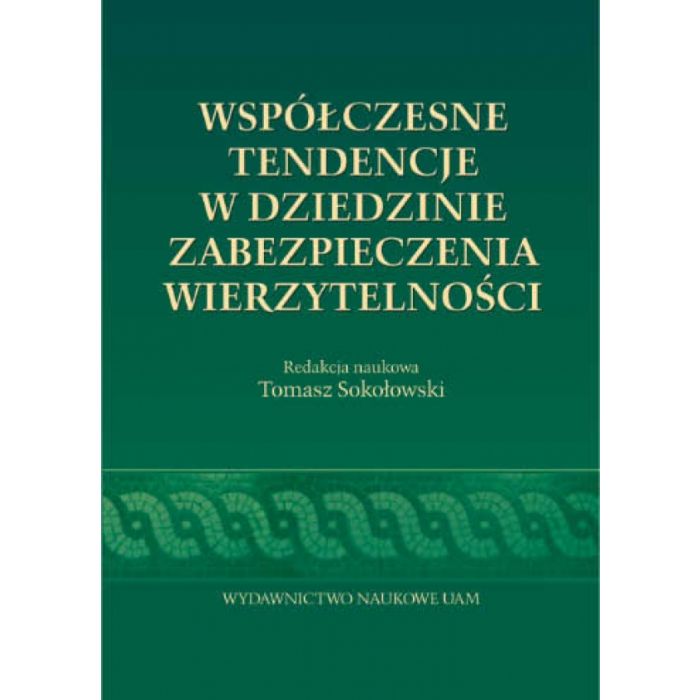Współczesne tendencje w dziedzinie zabezpieczenia wierzytelności
Wymagania stale rozwijającego się w Polsce rynku finansowego zaowocowały w ostatnich latach szeregiem prób modernizacji systemu zabezpieczeń wierzytelności. Zintensyfikowanej działalności prawodawczej wtórowała też praktyka, poszukując nowych środków i nowych przedmiotów zabezpieczeń. Opracowanie niniejsze ma na celu podsumowanie najważniejszych zjawisk, które odnotowano w tej dziedzinie. Prace poszczególnych autorów dotyczą zarówno zabezpieczeń o charakterze rzeczowym (hipoteka, zastaw), jak i osobistym, ze szczególnym uwzględnieniem problematyki poręczenia oraz zabezpieczających funkcji umowy rachunku bankowego. Poczesne miejsce zajmują też analizy kolizyjnoprawnych aspektów zabezpieczeń wierzytelności.
The latest trends related to securing a debt are characterized by a considerable increase in abstract and dynamic elements. A distinguishing feature of contemporary kinds of security for a debt, both in the form of personal property and a pledge, is that they are markedly remote from classic, less complex juridical structures and that there is a tendency to create more complicated and abstract objects of legal transactions. As for personal security, the model of guarantees is evolving with respect to the following aspects: a guarantor’s debt, general guarantee, the conversion of bill of exchange liabilities into a civil law guarantee, a notification to a guarantor of a debtor’s delay, a future debt guarantee, the scope of a guarantor’s liability and the accessoriness of a guarantee, the scope of a guarantor’s objections, as well as the legal implications of subrogation and cumulative liability for a debt. As for international law, these aspects are being standardized and the law is influenced by the Rome I Regulation. Deposit is structurally similar to bid security, an advance payment or earnest money. The common trend to authorize banks to collect money for the repayment of a borrower’s liabilities induces a limitation of banks’ dominance. A trust account in the area of property development encounters obstacles related to consumer contracts. As for pledge rights, a pledge on third-generation image rights and other information-related rights has been created. Also, a pledge on all of the rights and responsibilities of a partner in a partnership has been introduced. The amendment to mortgage brings about a need for strengthening the protection of apartment buyers, whereas the concept of “adequate” security for a mortgage debt requires that excessive security be defined. Changes to the accessoriness principle provide a motivation for close juridical connections between accessory rights and a principal right or for functional connections between independent rights. The forms of and quasi-obligations arising from agreements on establishing subintabulate (i.e. a mortgage secured with another mortgage) require to be clarified.
| Informacje szczegółowe | |
|---|---|
| Spis treści |
Pobierz plik

|
| Wstęp |
Pobierz plik

|
|
|
|
| Wersja publikacji | drukowana |
| Format | 17,0 x 24,0 |
| Tytuł (EN) | Secured transactions and claims. The newest tendencies |
| Typ publikacji | Monografia |
| Wydanie | I |
| Seria | Prawo nr 181 |
| ISSN | 0083-4262 |
| ISBN | 978-83-232-2617-8 |
| Liczba stron | 212 |
| Rodzaj oprawy | miękka |
